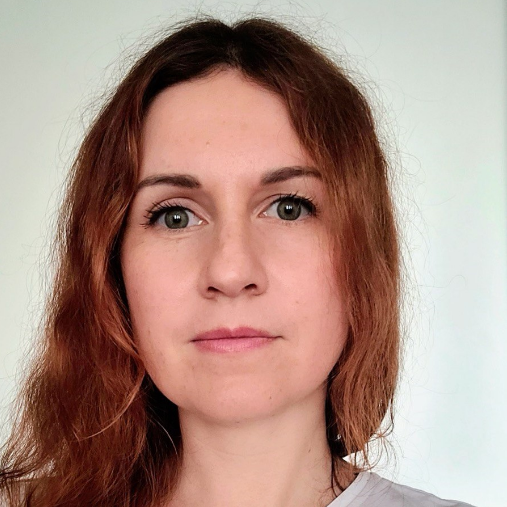International Journal of Information Technology and Computer Science (IJITCS)
IJITCS Vol. 17, No. 4, 8 Aug. 2025
Cover page and Table of Contents: PDF (size: 546KB)
Author(s)
Index Terms
Software Quality Model, Software Requirements, Quality Attribute
Abstract
As software systems continue to grow more complex, evaluating software quality becomes increasingly critical. This study analyzes existing software quality models, including McCall, Boehm, FURPS, and ISO Systems and Software Engineering – Systems and Software Quality Requirements and Evaluation (SQuaRE), with a specific focus on the ISO/IEC 25010:2023 standard. The research aims to assess the completeness of these models and explore interdependencies among key quality attributes relevant to software requirements engineering. The paper identifies key characteristics and associated metrics based on ISO/IEC standards using comparative analysis and a literature review. Findings show that ISO/IEC 25010:2023 provides the most comprehensive structure, with Functional Suitability and Compatibility identified as essential due to their universally recommended metrics. Survey data from 328 practicing analysts in Ukraine and internationally demonstrate a gap between theoretical models and real-world requirements documentation practices, particularly for non-functional requirements. The identified dependencies between quality attributes enable a more integrated and structured approach to identifying and analyzing non-functional requirements in IT projects. The study emphasizes that software quality models must be tailored to project-specific goals and constraints, with attention to trade-offs and stakeholder needs during the requirements specification, prioritization, and validation processes. The findings support the adaptation of quality models to specific project constraints and emphasize the business analyst’s role in tailoring quality criteria for practical use in software development.
Cite This Paper
Denys Gobov, Oleksandra Zuieva, "Software Quality Attributes in Requirements Engineering", International Journal of Information Technology and Computer Science(IJITCS), Vol.17, No.4, pp.38-48, 2025. DOI:10.5815/ijitcs.2025.04.04
Reference
[1]D. Gobov and O. Zuieva, "Examining software quality concept: business analysis perspective", Bull. Nat. Tech. Univ. "KhPI"., Ser. Syst. Anal. Control Inf. Technol., no. 2(10), 2023: 9–14. DOI: 10.20998/2079-0023.2023.02.02
[2]D. Gobov and O. Zuieva, "Identifying the dependencies between IT project context and business analysis document content", Innovative Technologies and Scientific Solutions for Industries, no. 2(24), 2023: 39–53. DOI: 10.30837/itssi.2023.24.039
[3]J. P. Miguel, D. Mauricio, and G. Rodríguez, "A review of software quality models for the evaluation of software products", International Journal of Software Engineering & Applications, vol. 5, no. 6, 2014: 31–53. DOI: 10.5121/ijsea.2014.5603
[4]J. A. McCall, P. K. Richards, and G. F. Walters, Factors in Software Quality. Volume I. Concepts and Definitions of Software Quality. Sunnyvale, CA: GE Co., 1978.
[5]B. W. Boehm, J. R. Brown, and H. Kaspar, Characteristics of Software Quality. Amsterdam: North-Holland Publishing Co., 1978.
[6]M. S. Hemayati and H. Rashidi, "Software quality models: A comprehensive review and analysis", Journal of Electrical and Computer Engineering Innovations, vol. 6, no. 1, 2017: 59–76. DOI: 10.22061/jecei.2019.1076
[7]ISO/IEC 9126-1:2001, Software engineering – Product quality – Part 1: Quality model [S]. Geneva, Switzerland: ISO, 2001.
[8]G. L. Saini, D. Panwar, S. Kumar, and V. Singh, "A systematic literature review and comparative study of different software quality models", Journal of Discrete Mathematical Sciences and Cryptography, vol. 23, no. 2, 2020: 585–593. DOI: 10.1080/09720529.2020.1747188
[9]N. Yılmaz and A. K. Tarhan, "Meta-models for software quality and its evaluation: a systematic literature review", in Proc. Int. Workshop on Software Measurement and the 15th Int. Conf. on Software Process and Product Measurement, Mexico, 2020.
[10]I. G. Ndukwe, S. A. Licorish, A. Tahir, and S. G. MacDonell, "How have views on software quality differed over time? Research and practice viewpoints", Journal of Systems and Software, vol. 195, 2023: 111524. DOI: 10.1016/j.jss.2022.111524
[11]D. Gobov and N. Sokolovskiy, "An association rule mining for selection requirement elicitation and analysis techniques in IT projects", Lecture Notes in Business Information Processing, vol. 499, 50–65, 2024. DOI: 10.1007/978-3-031-51075-5_4
[12]N. N. U. Januhari, A. Setvanto, and E. Utami, "The influence of cultural factors in software quality assessment models: A systematic literature review", in Proc. 6th Int. Conf. on Cybern. Intell. Syst. (ICORIS), Nov. 2024: 1–6. DOI: 10.1109/icoris63540.2024.10903754
[13]D. Gobov, "Practical study on software requirements specification and modelling techniques", International Journal of Computing, vol. 22, no. 1, 2023: 78–86. DOI: 10.47839/ijc.22.1.2882
[14]H. Asfa and T. J. Gandomani, "Software quality model based on development team characteristics", International Journal of Electrical and Computer Engineering, vol. 13, no. 1, 2023. DOI: 10.11591/ijece.v13i1.pp859-871
[15]D. Gobov, D. and O. Titlova, "Towards identifying challenges in business analysis on IT projects–a practical study", Radioelectronic and Computer Systems, (2), 193-206, 2023. DOI: 10.32620/reks.2023.2.16
[16]S. K. Sharma and M. Khaliq, "Design and development of software quality forensics framework and model", Multidisciplinary Science Journal, vol. 6, no. 7, 2024: e2024111. DOI: 10.31893/multiscience.2024111
[17]K. Borana, M. Sharma, and D. Abhyankar, "A novel software quality characteristic recommendation model to handle the dynamic requirements of software projects that improves service quality and cost", International Journal of Advanced Computer Science and Applications, vol. 14, no. 7, 2023. DOI: 10.14569/ijacsa.2023.0140762
[18]I. Jacobson, G. Booch, and J. Rumbaugh, The Unified Software Development Process. Reading, MA: Addison-Wesley, 1999.
[19]arc42 Quality Model [Online]. Available: https://quality.arc42.org/articles/arc42-quality-model
[20]International Institute of Business Analysis (IIBA), A Guide to the Business Analysis Body of Knowledge (BABOK Guide), Version 3.0. Toronto, Canada: IIBA, 2015.
[21]ISO/IEC 25010:2023, Syst. and soft. engin. – Sys. and soft. Quality Requirements and Evaluation (SQuaRE) – Product quality model. Geneva, Switzerland: ISO, 2023.
[22]ISO/IEC 25019:2023, Syst. and soft. engin. – Sys. and soft. Quality Requirements and Evaluation (SQuaRE) – Quality measure elements. Geneva, Switzerland: ISO, 2023.
[23]ISO 9000:2015, Quality management systems – Fundamentals and vocabulary. Geneva, Switzerland: ISO, 2015.
[24]ISO/IEC 25002:2024, Systems and software engineering – Systems and software Quality Requirements and Evaluation (SQuaRE) – Quality measurement reference model and guide. Geneva, Switzerland: ISO, 2024.
[25]ISO/IEC 25023:2016, Systems and software engineering – Systems and software Quality Requirements and Evaluation (SQuaRE) – Measurement of system and software product quality. Geneva, Switzerland: ISO, 2016.
[26]A. R. García-Borgoñón, M. Mejía, and J. Ospina, "A compliance analysis of Agile methodologies with the ISO/IEC 29110 standard", Procedia Computer Science, vol. 60, 2015: 1131–1138. DOI: 10.1016/j.procs.2015.08.179
[27]M. Wiedemann, P. Zimmermann, and S. Wagner, "DevOps and software quality: A systematic mapping, Computer Science Review, vol. 38, 2020: 100286. DOI: 10.1016/j.cosrev.2020.100286
[28]A. Trockman, D. Xiong, J. Huang, and L. Zhang, "AICodeReview: Advancing code quality with AI-enhanced reviews", Journal of Systems and Software, vol. 205, 2024: 111740. DOI: 10.1016/j.jss.2024.111740
[29]B. Naqvi, A. Seffah, and A. Abran, "Framework for examination of software quality characteristics in conflict: A security and usability exemplar", Cogent Engineering, vol. 7, no. 1, 2020: 1788308. DOI: 10.1080/23311916.2020.1788308
[30]A. M. Alashqar, "A survey on the relationships between quality attributes of the ISO9126 model", International Journal of Engineering and Information Systems, vol. 5, no. 3, 2021: 29–34.
[31]ISO/IEC 25030:2019, Systems and software engineering – Systems and software Quality Requirements and Evaluation (SQuaRE) – Quality requirements framework. Geneva, Switzerland: ISO, 2019.
[32]D. Gobov, N. Sokolovskiy, "An Association Rule Mining for Requirement Document Structure in IT Projects." Lecture Notes on Data Engineering and Communications Technologies, vol 242, 2025. DOI: 10.1007/978-3-031-84228-3_27

